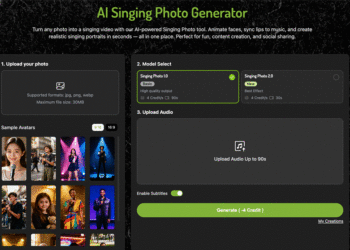AI is no longer science fiction. It’s in your phone, your bank, your workplace—and chances are, it’s going to shape your future career. But behind every breakthrough in AI, there’s a trio of professionals working behind the scenes: Data Scientists, Data Engineers, and Data Architects.
And here’s the real news: you don’t have to move to a big tech hub to become one of them.
Remote opportunities in these roles are growing fast. If you’ve ever considered breaking into tech but didn’t know where to start, understanding how this trio works—and where you might fit—is the first step.
Let’s break it down.
The AI Backbone: Why These Three Roles Matter
Every AI model, smart recommendation, or automation you see today is only possible because the right data was captured, cleaned, stored, and interpreted. That’s where these three job titles come in:
- Data Engineers build the data pipelines and manage the infrastructure.
- Data Architects design the overall structure for how that data flows and is stored.
- Data Scientists analyze the data and create models that power AI systems.
Think of it like a factory:
- Engineers are the builders and mechanics.
- Architects are the designers and planners.
- Scientists are the strategists turning raw materials into insight.
This workflow has become essential in companies of all sizes, and most of them are hiring remote talent to fill these roles.
Data Scientist Remote Jobs: Turning Numbers into Intelligence
Data scientists are problem-solvers. They take huge datasets and find patterns, make predictions, and build models that businesses can use.
Whether it’s forecasting sales, optimizing delivery routes, or improving user recommendations, the demand for skilled data scientists continues to rise. But what’s even more important now is the shift in how they work.
Why Remote Works for Data Scientists:
- Most tools (Python, R, Jupyter, etc.) are cloud-based and accessible anywhere.
- Companies care more about outcomes than office hours.
- Collaboration is seamless through tools like Slack, Zoom, and GitHub.
If you’re exploring data scientist remote jobs, focus on building a project portfolio. Employers want proof you can do the work, not just a degree on paper.
Data Engineer Remote Jobs: The Builders of the Data World
Without clean, well-organized data, there’s nothing for a scientist to work on. Data engineers are responsible for moving data from raw sources into usable formats. They create ETL pipelines, manage cloud storage, and ensure systems scale.
They also play a big part in making AI models work in real-time.
Why This Role Is in Demand (and Remote-Friendly):
- Cloud platforms like AWS and Azure have simplified infrastructure management.
- Open-source tools like Airflow and Spark are widely adopted and remote-compatible.
- Companies need faster, cheaper solutions—remote engineers offer both.
Data engineer remote jobs often focus on practical experience. If you can build a pipeline, manage data warehouses, or work with APIs, you’re in.
Data Architect Remote Jobs: Designing the Big Picture
A data architect doesn’t just code—they strategize. They figure out what systems a company needs to store, secure, and retrieve data at scale. Their work affects every other data role, especially as AI gets bigger and more complex.
This role is now one of the most crucial in any data team, especially when scaling across regions or working with real-time AI tools.
Why Architects Thrive Remotely:
- Their work is largely planning, designing, and consulting—ideal for remote setups.
- Remote architects often work cross-functional roles, integrating with both engineering and business teams.
- Their impact is long-term, making output more important than presence.
If you’re looking into data architect remote jobs, know that employers value architecture certifications (like Azure Solutions Architect) and real-world experience designing systems.
The AI Revolution Needs All Three—Working Togethe
It’s not about choosing the “best” role—it’s about how these three work in sync.
AI innovation is only as good as the foundation it sits on. That foundation is built by engineers, shaped by architects, and activated by scientists. And now, companies are hiring across time zones to fill these roles with remote talent.
Even entry-level professionals can break in with the right skills and project work.
What’s Driving the Remote Demand?
Several forces are making remote data jobs the norm:
- Cloud adoption: More teams use AWS, Azure, and GCP, so on-site servers are disappearing.
- Cost efficiency: Companies save on overhead with remote hires.
- Global talent pool: Skill matters more than location now.
According to LinkedIn’s 2024 Emerging Jobs Report, roles like Data Engineer and Data Scientist remain in the top 10 fastest-growing jobs globally. And nearly 30% of those roles are listed as remote-first.
Where Do You Start? A Quick Guide
- Choose a path: Engineer (infrastructure), Scientist (analytics), or Architect (strategy)?
- Learn the tools: Python, SQL, cloud services, Git.
- Build projects: Use public datasets or contribute to open-source.
- Publish your work: GitHub, blogs, or portfolio websites.
- Apply smart: Focus on data scientist remote jobs, data engineer remote jobs, or data architect remote jobs with companies open to flexible work.
Final Thoughts: Microsoft Tech Career Jobs Are Opening Doors
Many of these remote data roles are deeply tied to the Microsoft tech ecosystem—from Azure to Power BI to Fabric. Companies using Microsoft tools need professionals who understand their environment.
That’s why exploring Microsoft tech career jobs isn’t just smart—it’s strategic. You’ll be tapping into one of the biggest, most consistent ecosystems in enterprise tech today.
Want to explore remote opportunities in data science, engineering, or architecture? Start building your path today. With the right skills, a few solid projects, and the growing demand for remote-first talent—you’re already closer than you think.












































































